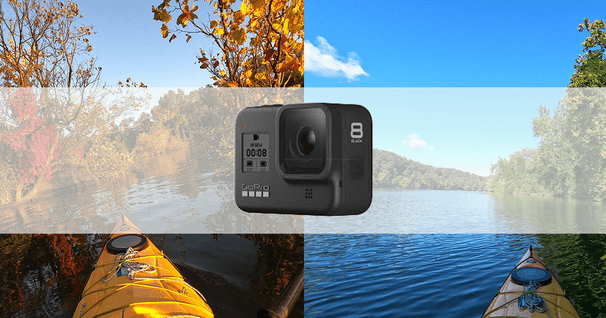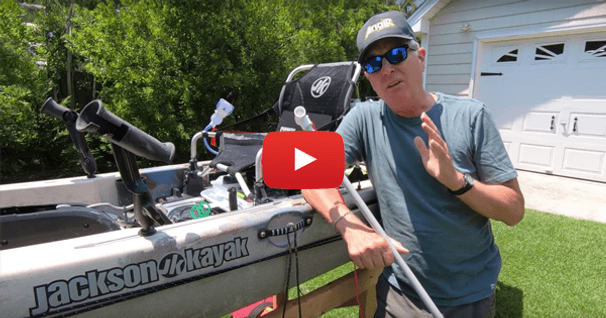Equipment Concerns
If you take wilderness canoeing seriously, you'll want the best gear you can afford. Sure, you can get by with shoddy stuff - a lot of canoeists do - but only if being wet, cold and bug-bitten is part of your good time.
In his classic book, Camping and Woodcraft(Macmillan Press, 1917), Horace Kephart wrote: "I come (to the wilderness) not to rough it, but to smooth it!"
Kepart valued his comfort in the wild outdoors and was always on the prowl for better gear and better ways. He wrote:
"To be sure, even though a man rigs up his own outfit, he never gets it quite to suit him. Every season sees the downfall of some cherished scheme, the failure of some fond contrivance. Every winter sees you again fussing over your kit, altering this, substituting that, and flogging your wits with the same old problem of how to save weight and bulk without sacrifice of utility."
Like Kephart, I am always fussing with my stuff. Here are some tricks I've learned over the years-and some things to consider when you buy stuff for the long haul. Manufacturers please take note!
- Rain jackets and wind-shells should be sized full - like an Inuit winter parka - so they will fit over bulky clothes or your PFD (Technically, you should never wear anything over a PFD. But sporadic rains demand a compromise). Sleeves should be clown-like wide (3 or 4 times the diameter of your arm). Zippers should close high on the neck and so tightly that cold air can't slither through and chill your chest. Most modern parkas are cut too wide in the throat. You need a snap or Velcro tab to seal the throat. The alternative is to snug the elastic hood cords tightly around your neck - the hood becomes a tight collar.
- Arm-pit zippers are another peeve; I've never found one that doesn't leak when canoeing in heavy rain!
- I never tighten the waist and hem cords on my rain jacket - they restrict ventilation.
- Rain pants should be simple: Avoid closures at the ankle - they restrict ventilation and encourage sweat. Primitive man learned long ago that water doesn't flow uphill!
- Zippered pant legs are problematic: the zippers clog with debris and, if you're short (like me), the legs bunch up in clown-like folds. Pant legs should hang stove-pipe straight (no taper) and be hemmed well above the ankle so they won't catch on vegetation when you walk. Wear rain pants outside your boots.
- Bibbed rain pants are awkward in sporadic rains-you have to remove your PFD and rain coat to put the pants on or off. Bibless pants are best for paddlers.
- A bonded fabric liner will reduce the condensation of your rain gear. But an un-bonded liner (especially in rain pants) will tend to droop when damp and absorb the rain. I hate un-bonded liners!
- Most rain pants have a parachute cord belt with a cord-lock closure. This system is light and compact but it's not secure enough to hold the pants up when they absorb water (gain weight) from a heavy rain. A second cord-lock usually provides enough friction to keep the waist cord tight. But a webbed belt with a nylon buckle is more secure and comfortable. Manufacturers please take note!
- Rain pants for men should have a waterproof zippered fly with a double overlapping seal. Women's rain pants should have a waterproof zipper that winds around the crotch. Holler, if you know of any company that makes pants like these.
- Long johns are essential in any weather. Wool has a greater temperature comfort range than synthetics; it's more breathable and it doesn't develop obnoxious odors over the long haul. If you think you're allergic to wool, you haven't tried ultra soft Merino wool from New Zealand.
- I bring four hats: A broad-brimmed Tilley for sun, a wool stocking cap for cold, a Gore-Tex "souwester" for rain and an ultralight nylon ball cap for camp.
- If you need a helmet and dry-suit, you should probably portage.
- A super-sharp, thin-bladed sheath knife that will cleanly slice salami and cheese and split thick kindling, is more useful than a chunky rescue knife. Wear your knife in a secure sheath on your hip, not on the front of your PFD, which you won't wear in camp and when you portage.
- Over-heating is as serious as hypothermia. Choose a lightweight PFD that allows your body to breathe. Be sure it will adjust to fit over bulky clothes.
The bottom line is that single-mindedness can spell trouble on a wilderness river. Think "diversity" and you'll be in good hands. It's better to be a well-rounded mid-level paddler than a polished professional in one discipline. Not everyone shares the wilderness dream, but everyone can contribute to it.
Cliff Jacobson is a professional canoe guide and outfitter for the Science Museum of Minnesota, a wilderness canoeing consultant, and the author of more than a dozen top-selling books on camping and canoeing. www.cliffcanoe.com
Related Articles
~A Paddler's Post submitted by Gregg Jackson~ For decades I had combined the joys of hiking and…
Forget paddles and forget pedals, there is a new way to get from Point A to Point B in your kayak: Jet.…
Learn to make a good DIY stake out pole so you can save some money for other kayak updates!
By Tom Watson I contend, and will steadfastly debate, that the knife is the second most vital tool…



